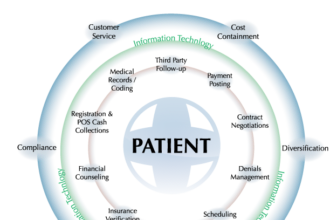 The historic picture is nothing like today. For decades, competition within the nation’s healthcare delivery system was low-key, even passive.
The historic picture is nothing like today. For decades, competition within the nation’s healthcare delivery system was low-key, even passive.
 The historic picture is nothing like today. For decades, competition within the nation’s healthcare delivery system was low-key, even passive. And the vital professional referral stream that traditionally brought new patients to hospitals and specialty practices required little marketing attention…if anyone thought much about it at all.
The historic picture is nothing like today. For decades, competition within the nation’s healthcare delivery system was low-key, even passive. And the vital professional referral stream that traditionally brought new patients to hospitals and specialty practices required little marketing attention…if anyone thought much about it at all.
But the dynamics of healthcare reform and other forces have redefined competition from a pastoral landscape to a rugged and rocky road. And competition, particularly for all-important professional referrals, is an essential marketing priority, with Physician Liaison, Physician Relations, or Practice Representatives charged with new business development.
The trouble is—given the lack of experience, the turbulent ramp-up or other reasons—physician liaison programs often fail at both the practice and the hospital level. Well-intended efforts frequently crash and burn.
This resource-wasting demise, in our experience, can be traced directly to one or more of the following “reasons to fail.” Here’s how to kill the effectiveness of a Physician Liaison Program before it begins (AND what to do instead).
1. Don’t set quantifiable goals. A representative can’t succeed without a measurable definition of goals. How can they meet your expectation if they haven’t been set? What are the goals of the program—in specific terms—for the number of referrals, frequency of contacts, meetings set, etc.?
2. Hire the cheapest person you can. Surprisingly, many people want a magical minimum-wage person who will to bring in millions of dollars in revenue. Not surprisingly, $15 and hour is not going to cut it, and “bagel droppers” virtually never produce results. In the real world, corporate America and hospitals provide six-figure compensation packages for highly effective sales people. Pharma reps make $70k+…so think $35+ an hour, and not $15.
3. Hire someone who has no sales experience. Being “nice,” or a “people person,” is not synonymous with being a qualified new business developer. “Nice” is certainly a good thing, but it can’t be the only attribute. You need someone who can gain the trust and respect of physicians and referral coordinators. Sales training, a success ethic, and a proven track record are critical.
When you find a clinical person who can also sell it’s a home run. But you are taking a high risk when you sacrifice sales ability for clinical experience alone. Pharma reps are good candidates because many have been laid off or want to be moms with flexible schedules. But not all pharma reps are good at selling. Remember that even sales VPs think they are lucky when 50 percent stick.
4. Commit too little time to the program. Your representative needs to be in the field a minimum of three days a week, and not caught up with miscellaneous duties or distracted by otherwise unassigned busy work.
5. Hire a marketing person. It’s important to distinguish between marketing and sales. These roles require completely different skill sets. Sales requires a “face-to-face” system, but a marketing person will find 100 reasons not to go into the field.
6. Don’t train them. (Enough said.)
7. Don’t arm your rep with a database program. The required constant-contact system has a thousand moving parts and touch points and maybe a million details. Without at least a basic CRM (Customer Relationship Management) software program, you can’t keep the people and process accountable, and nothing is organized.
8. Don’t arm your rep with appropriate support materials. The representatives that have little or nothing to help them communicate, convince and convert are handicapped before they leave the gate. Most likely, your competitors have great marketing materials. But regardless of what else is out there, your message can only be top-notch.
9. Don’t follow up and don’t manage. The retail world is sales-driven, but the general concept of sales is outside the common culture of practices and hospitals. Often, there is little or no oversight structure. A successful physician relations program will have a regular routine for managing, reporting (and ultimately delivering) results.
We have been advising and working with thousands of providers for many years, and we’ve found few exceptions to this list. Once in a long while someone stumbles into success, but the failure rate is nearly perfect. About 99 times out of 100, if you step on one of these tripwires, your Physician Liaison Programs will crash into the cliff.
So, ignore these classic mistakes at your own peril.






